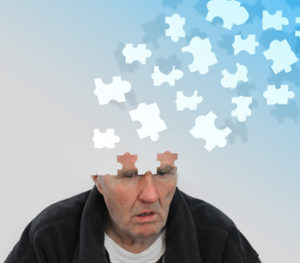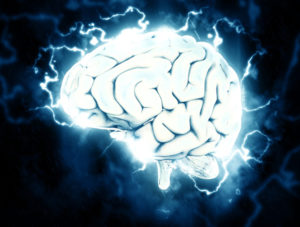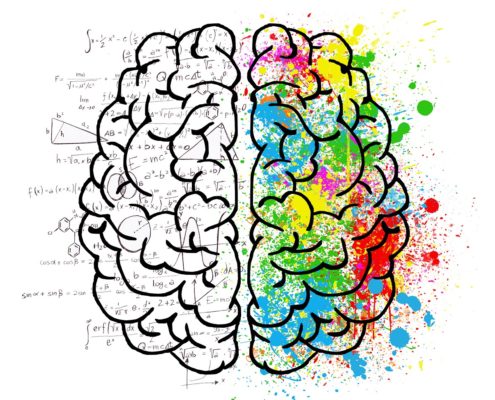You might be surprised how little wine it takes to damage your brain

At INDY Neurofeedback, we hate to be the bearer of bad news, especially this time of year, but – contrary to what you may have heard, even one glass of wine a night is not a good thing – at least as far as your brain is concerned.
Many adults drink a glass of red wine a night with the understanding that it is good for the heart. And yes, studies have been telling us that moderate wine consumption may be better for your health than heavy drinking or abstaining from alcohol completely. But what does your brain have to say about it?
It turns out that even moderate alcohol intake (defined by researchers as seven to fourteen glasses of alcohol per week) may damage the brain over time. To reach this conclusion, researchers in the UK followed 550 people over 30 years, tracking:
- weekly alcohol intake
- cognitive, or thinking abilities, periodically
- MRI brain scans at the end of the study
The results? A bit frightening, frankly. The more people drank, the more atrophy, or shrinking, was found in their brain’s hippocampal region. Since the hippocampus is an area involved in memory, this was significant. Even moderate drinkers were three times more likely to have hippocampus atrophy than people who abstained.
What about light drinkers? Those who drank less than seven ounces per week (about three-and-a-half glasses of wine,) didn’t have significant brain changes. But, importantly — and contrary to what we thought we knew — they didn’t experience any health benefits.
The most severe damage, not surprisingly, was found among heavy drinkers, or those who had over 30 ounces (more than about 15 glasses of wine) per week.
How to put this in perspective? Previous studies linking health benefits to moderate drinking may not have provided a complete picture. It is difficult to sort out – was it the alcohol is providing those benefits or were the people who drank only moderately simply healthier?
But, with researchers having tracked so very many people, over the course of so many years, revealing at least some evidence of physical and cognitive changes, at INDY Neurofeedback, we’re recommending that these study results should be taken (ahem) – soberly.
What does this mean for you? If you drink one drink per day during the week, and two drinks a day on the weekend, you have a higher risk of hippocampal atrophy, according to this study.
These findings contradict popular knowledge, previous studies, and the national recommendations on safe alcohol consumption. The study’s authors conclude that it “calls into question the current US guidelines.”
The bottom line: If you’re going to drink, limit yourself to one serving daily or less. Your brain will benefit from this discipline.

 Over five and a half million Americans are living with the neurodegenerative disease today. According to the Alzheimer’s Association (www.alz.org), medical researchers predict that by 2050, 14 million people in the U.S. will require full-time care for Alzheimer’s disease. That number is equal to the populations of New York City, Los Angeles and Chicago combined.
Over five and a half million Americans are living with the neurodegenerative disease today. According to the Alzheimer’s Association (www.alz.org), medical researchers predict that by 2050, 14 million people in the U.S. will require full-time care for Alzheimer’s disease. That number is equal to the populations of New York City, Los Angeles and Chicago combined. Across America, there’s a pill for just about every health issue you can think of. Americans don’t think twice about using them, either. If it’s available in a drug store, then it must be safe, right?
Across America, there’s a pill for just about every health issue you can think of. Americans don’t think twice about using them, either. If it’s available in a drug store, then it must be safe, right?
 Because of the way the brain is housed in the cranium, explains Leanne O’Neil of INDY Neurofeedback, an impact from almost any direction can cause damage. Although the brain is incredibly resilient, is it also quite susceptible to injury.
Because of the way the brain is housed in the cranium, explains Leanne O’Neil of INDY Neurofeedback, an impact from almost any direction can cause damage. Although the brain is incredibly resilient, is it also quite susceptible to injury. New studies are shedding light on what goes on in the brains of women immediately after they become mothers of new babies. Giving birth is a major event for the brain with changes that are immediate, pronounced and foundational.
New studies are shedding light on what goes on in the brains of women immediately after they become mothers of new babies. Giving birth is a major event for the brain with changes that are immediate, pronounced and foundational. According to the National Institute of Health, childhood diagnoses of ADHD (Attention Deficit Hyperactivity Disorder) have climbed sharply in the last two decades. The Center for Disease Control and Prevention says that ADHD diagnoses jumped over 40% between 2003 and 2011. In 2016 alone more than 9% of children between the ages of 2 and 17, a total of more than 6 million children, were diagnosed with ADHD.
According to the National Institute of Health, childhood diagnoses of ADHD (Attention Deficit Hyperactivity Disorder) have climbed sharply in the last two decades. The Center for Disease Control and Prevention says that ADHD diagnoses jumped over 40% between 2003 and 2011. In 2016 alone more than 9% of children between the ages of 2 and 17, a total of more than 6 million children, were diagnosed with ADHD. Because September is National Pain Awareness month, INDY Neurofeedback is devoting this space to the important topic of pain management.
Because September is National Pain Awareness month, INDY Neurofeedback is devoting this space to the important topic of pain management.  We’ve long heard about head trauma due to playing rough sports like rugby and football. But what about soccer? Of particular concern is “heading”, or repeatedly using the head to forward the ball. Studies have found that frequent heading is a common and under-recognized cause of concussion symptoms and may actually cause more damage than the impact from unintentional head-to-head collisions.
We’ve long heard about head trauma due to playing rough sports like rugby and football. But what about soccer? Of particular concern is “heading”, or repeatedly using the head to forward the ball. Studies have found that frequent heading is a common and under-recognized cause of concussion symptoms and may actually cause more damage than the impact from unintentional head-to-head collisions. Neuroplasticity is the term scientists use to talk about the brain’s innate ability to form new neural connections in response to learning or experience or following injury. Specifically, neuroplasticity allows the nerve cells in the brain (neurons) to compensate for injury and/or disease and to adjust their response to new situations or to changes in their environment.
Neuroplasticity is the term scientists use to talk about the brain’s innate ability to form new neural connections in response to learning or experience or following injury. Specifically, neuroplasticity allows the nerve cells in the brain (neurons) to compensate for injury and/or disease and to adjust their response to new situations or to changes in their environment. Scientists and our INDY Neurofeedback team know that our brains do an amazing amount of important work while we sleep. We also know that sleeping is an integral part of our life.
Scientists and our INDY Neurofeedback team know that our brains do an amazing amount of important work while we sleep. We also know that sleeping is an integral part of our life.